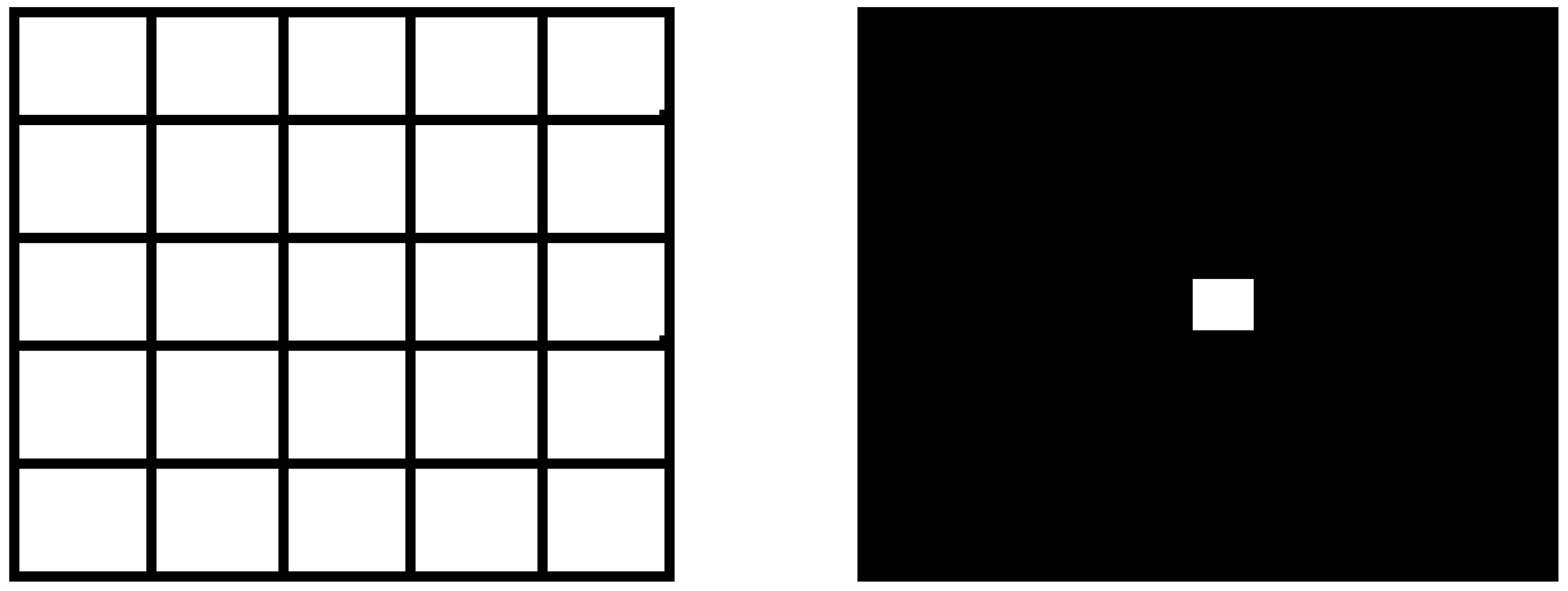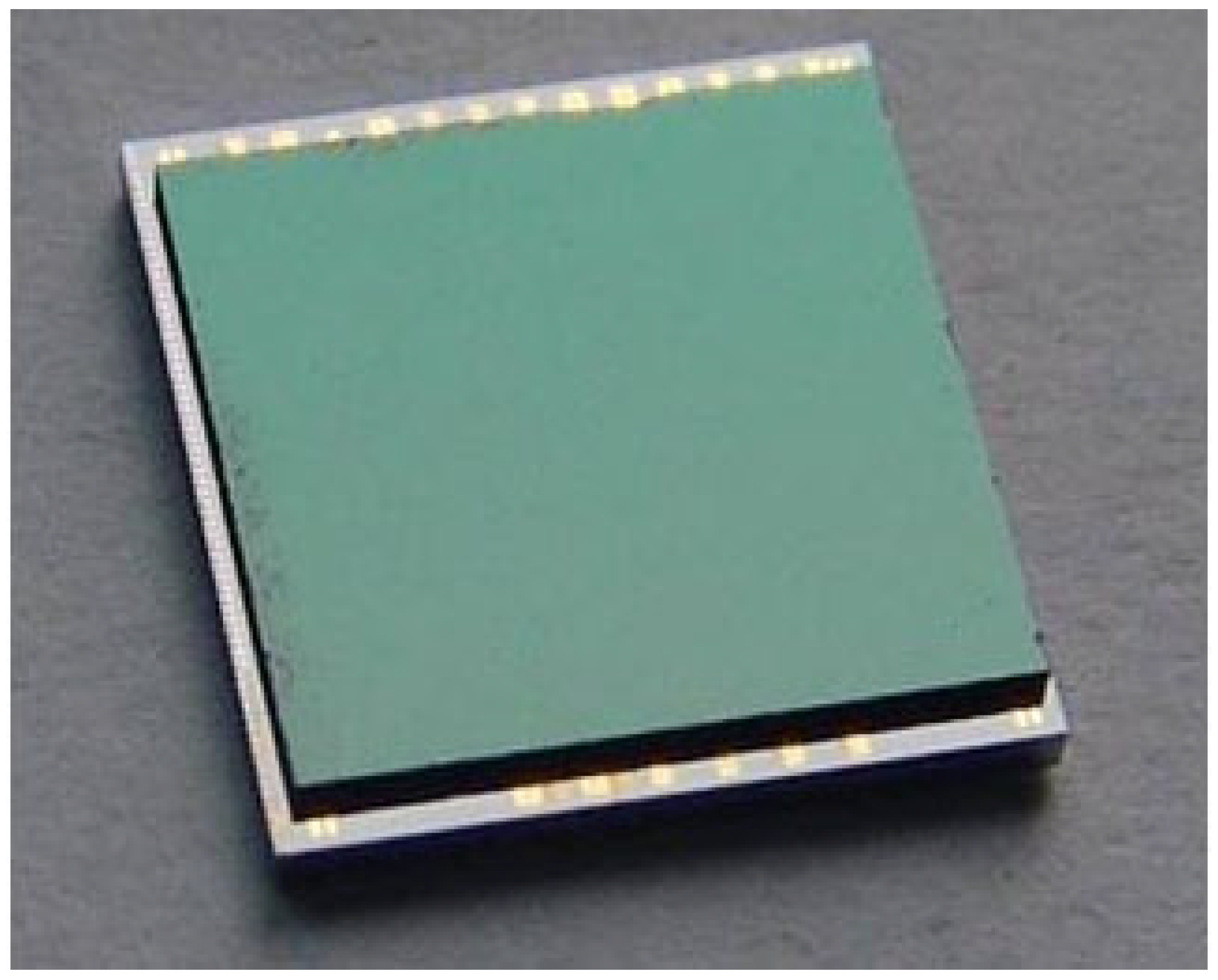A Novel Eye Hole Method for the Crosstalk Test of Small Element Infrared Focal Plane Arrays
Abstract
1. Introduction
2. Analysis of a Novel Eye Hole Method and Small Element IRFPAs Application
2.1. Analysis of Eye Hole Units Design
2.2. Eye Hole Units Preparing
2.3. Method Application
3. Result and Discussion
3.1. Verification of the Novel Eye Hole Method
3.2. The Novel Eye Hole Method for the Crosstalk Test of Small Element IRFPAs
4. Conclusions
Author Contributions
Funding
Institutional Review Board Statement
Informed Consent Statement
Data Availability Statement
Conflicts of Interest
References
- Rogalski, A.; Antoszewski, J.; Faraone, L. Third-generation infrared photodetector arrays. J. Appl. Phys. 2009, 105, 091101. [Google Scholar] [CrossRef]
- Lei, W.; Antoszewski, J.; Faraone, L. Progress, challenges, and opportunities for HgCdTe infrared materials and detectors. Appl. Phys. Rev. 2015, 2, 041303. [Google Scholar] [CrossRef]
- Ye, Z.H.; Li, H.H.; Wang, J.D.; Chen, X.; Sun, C.H.; Liao, Q.J.; Huang, A.B.; Li, H.; Zhou, S.M.; Lin, J.; et al. Recent hotspots and innovative trends of infrared photon detectors. J. Infrared Millim. Waves 2018, 37, 15–39. [Google Scholar]
- Rogalski, A. Infrared Detectors, 2nd ed.; CRC Press: Boca Raton, FL, USA, 2010. [Google Scholar]
- Jiao, H.X.; Wang, X.D.; Wu, S.Q.; Chen, Y.; Chu, J.H.; Wang, J.L. Ferroelectric field effect transistors for electronics and optoelectronics. Adv. Sci. 2022, 10, 011310. [Google Scholar] [CrossRef]
- Jiao, H.X.; Wang, X.D.; Chen, Y.; Guo, S.F.; Wu, S.Q.; Song, C.Y.; Huang, S.Y.; Huang, X.N.; Tai, X.C.; Lin, T.; et al. HgCdTe/black phosphorus van der Waals heterojunction for high-performance polarization-sensitive midwave infrared photodetector. Sci. Adv. 2022, 8, eabn1811. [Google Scholar] [CrossRef] [PubMed]
- Li, Z.Q.; Hong, E.L.; Zhang, X.Y.; Deng, M.; Fang, X.S. Perovskite-type 2D materials for high-performance photodetectors. J. Phys. Chem. Lett. 2022, 13, 1215–1225. [Google Scholar] [CrossRef] [PubMed]
- Li, Z.Q.; Liu, X.Y.; Zuo, C.L.; Yang, W.; Fang, X.S. Supersaturation-controlled growth of monolithically integrated lead-free halide perovskite single-crystalline thin film for high-sensitivity photodetector. Adv. Mater. 2021, 33, 2103010. [Google Scholar] [CrossRef] [PubMed]
- Hu, Y.; Li, Z.Q.; Fang, X.S. Solution-prepared AgBi2I7 thin films and their photodetecting properties. J. Inorg. Mater. 2023, 38, 1055–1061. [Google Scholar] [CrossRef]
- Zandian, M.; Piquette, E.; Farris, M.; Edwall, D.; Daraselia, M.; Holland, E.; Beletic, J.W. Teledyne’s high-performance 4K × 4K infrared detectors. Astron. Nachr. 2023, 344, e20230058. [Google Scholar] [CrossRef]
- Cheng, J.F.; Li, X.; Shao, X.M.; Li, T.; Ma, Y.J.; Gu, Y.; Deng, S.Y.; Zhang, Y.G.; Gong, H.M. 2.45-μm 1280 × 1024 InGaAs focal plane array with 15-μm pitch for extended SWIR imaging. IEEE Photonics Technol. Lett. 2022, 34, 1041–1135. [Google Scholar] [CrossRef]
- Hou, Z.J.; Fu, L.; Si, J.J.; Wang, W.; Lv, Y.Q.; Lu, Z.X.; Wang, J.C. Identification and orientation of connected defective elements in FPA. J. Infrared Millim. Waves 2017, 36, 208–213. [Google Scholar]
- Hou, Z.J.; Fu, L.; Lu, Z.X.; Si, J.J.; Wang, W.; Lv, Y.Q. Causes and characteristics of indium bump defects in InSb focal plane array. J. Infrared Millim. Waves 2018, 37, 227–233. [Google Scholar]
- Charlie, G.; David, D.; Victor, P.; Rodolphe, A.; Claire, A.; Vincent, N.; Simon, F.; Eva, I.; Adrien, K.; Yoann, P.; et al. Photoconductive focal plane array based on HgTe quantum dots for fast and cost-effective short-wave infrared imaging. Nanoscale 2022, 14, 9359–9368. [Google Scholar]
- Boltar, K.O.; Mansvetov, N.G.; Stafeev, V.I.; Yakovleva, N.I. Interelement crosstalk in IR focal plane arrays. J. Opt. Technol. 2000, 67, 153–156. [Google Scholar] [CrossRef]
- Liao, Y.M.; Wang, K.; Zhu, H.Y.; Ji, X.L. Crosstalk in CMOS Terahertz detector array with on-chip SPR antenna. IEEE Photonics J. 2022, 14, 5955506. [Google Scholar] [CrossRef]
- Coussa, R.A.; Gallagher, A.M.; Kosai, K.; Pham, L.T.; Pierce, G.K.; Smith, E.P.; Venzor, G.M.; De Lyon, T.J.; Jensen, J.E.; Nosho, B.Z.; et al. Spectral crosstalk by radiative recombination in sequentialmode, dual midwavelength infrared band HgCdTe detectors. J. Electron. Mater. 2004, 33, 517–525. [Google Scholar] [CrossRef]
- Zhu, Y.M.; Li, X.; Wei, J.; Li, J.W.; Tang, H.J.; Gong, H.M.; Jiang, Y.D.; Yu, J.S.; Wang, Z.F. Analysis of cross talk in high density mesa linear InGaAs detector arrays using tiny light dot. Proc. SPIE 2012, 8419, 841911. [Google Scholar]
- Jeffrey, B.; Richard, S.; Billy, S.; Jamie, T.; Wan, C.F.; Mike, K.; Martha, O.; Mark, S.; Lewis, W.; Pradip, M.; et al. Permance and modeling of the MWIR HgCdTe electron avalanche photodiode. J. Electron. Mater. 2009, 38, 1579–1592. [Google Scholar]
- Schuster, J.; Belloti, E. Analysis of optical and electrical crosstalk in small pitch photon trapping hgcdte pixel arrays. Appl. Phys. Lett. 2012, 101, 261118. [Google Scholar] [CrossRef]
- Li, Y.; Ye, Z.H.; Lin, C.; Hu, X.N.; Ding, R.J.; He, L. Crosstalk suppressing design of GaAs microlenses integrated on HgCdTe infrared focal plane arrays. Opt. Quant Electron. 2013, 45, 665–672. [Google Scholar] [CrossRef]





| Test Conditions/Method | Small Spot Method | Novel Eye Hole Method |
|---|---|---|
| Type of blackbody | Point blackbody | Surface blackbody |
| Room temperature | 300 K | 300 K |
| Working temperature | 1000 K | 305 K |
| Working wave band | 3~5 μm | 3~5 μm |
| Diameter of the hole of the diaphragm | 10 mm | / |
| Distance between the hole of the diaphragm and photosensitive detector | 30 cm | / |
| Size of the photosensitive element | 50 μm × 50 μm | 50 μm × 50 μm |
| Parameter | Crosstalk of Coordinate Point (94, 85)/% | ||||
|---|---|---|---|---|---|
| Test data | 0.12 | 0.09 | 0.11 | 0.16 | 0.08 |
| 0.16 | 0.57 | 3.11 | 0.71 | 0.09 | |
| 0.02 | 3.15 | 100.00 | 3.11 | 0.19 | |
| 0.12 | 0.51 | 3.06 | 0.56 | 0.09 | |
| 0.09 | 0.11 | 0.14 | 0.19 | 0.11 | |
| Parameter | Response Voltage of the Eye Hole Point (94, 85)/V | ||||
|---|---|---|---|---|---|
| Test data | 0.0019 | 0.0012 | 0.0004 | 0.0006 | 0.0017 |
| 0.0008 | 0.0094 | 0.0606 | 0.0096 | 0.0004 | |
| 0.0006 | 0.0671 | 1.9572 | 0.0501 | 0.0009 | |
| 0.0010 | 0.0080 | 0.0509 | 0.0090 | 0.0004 | |
| 0.0019 | 0.0016 | 0.0002 | 0.0010 | 0.0008 | |
| Parameter | Crosstalk of the Eye Hole Point (94, 85)/% | ||||
|---|---|---|---|---|---|
| Test data | 0.10 | 0.06 | 0.02 | 0.03 | 0.09 |
| 0.04 | 0.48 | 3.31 | 0.49 | 0.02 | |
| 0.03 | 3.43 | 100.00 | 2.56 | 0.05 | |
| 0.05 | 0.41 | 2.60 | 0.46 | 0.02 | |
| 0.10 | 0.08 | 0.01 | 0.05 | 0.04 | |
| Parameter | Response Voltage of Eye Hole Point (313, 249)/V | ||||||
|---|---|---|---|---|---|---|---|
| Test data | 0.0001 | 0.0002 | 0.0003 | 0.0001 | 0.0006 | 0.0006 | 0.0000 |
| 0.0000 | 0.0011 | 0.0047 | 0.0074 | 0.0075 | 0.0022 | 0.0004 | |
| 0.0004 | 0.0040 | 0.0275 | 0.0486 | 0.0286 | 0.0020 | 0.0001 | |
| 0.0007 | 0.0064 | 0.0458 | 1.1849 | 0.0451 | 0.0108 | 0.0008 | |
| 0.0004 | 0.0065 | 0.0276 | 0.0433 | 0.0262 | 0.0022 | 0.0004 | |
| 0.0004 | 0.0029 | 0.0100 | 0.0110 | 0.0093 | 0.0029 | 0.0004 | |
| 0.0001 | 0.0003 | 0.0003 | 0.0003 | 0.0006 | 0.0006 | 0.0003 | |
| Parameter | Crosstalk of Eye Hole Point (313, 249)/% | ||||||
|---|---|---|---|---|---|---|---|
| Test data | 0.01 | 0.02 | 0.02 | 0.01 | 0.05 | 0.05 | 0.00 |
| 0.00 | 0.11 | 0.40 | 0.62 | 0.63 | 0.19 | 0.03 | |
| 0.04 | 0.34 | 2.32 | 4.10 | 2.41 | 0.17 | 0.01 | |
| 0.06 | 0.54 | 3.87 | 100.00 | 3.81 | 0.91 | 0.07 | |
| 0.04 | 0.55 | 2.33 | 3.66 | 2.21 | 0.19 | 0.03 | |
| 0.03 | 0.25 | 0.83 | 0.93 | 0.78 | 0.25 | 0.03 | |
| 0.01 | 0.02 | 0.02 | 0.02 | 0.05 | 0.05 | 0.02 | |
Disclaimer/Publisher’s Note: The statements, opinions and data contained in all publications are solely those of the individual author(s) and contributor(s) and not of MDPI and/or the editor(s). MDPI and/or the editor(s) disclaim responsibility for any injury to people or property resulting from any ideas, methods, instructions or products referred to in the content. |
© 2024 by the authors. Licensee MDPI, Basel, Switzerland. This article is an open access article distributed under the terms and conditions of the Creative Commons Attribution (CC BY) license (https://creativecommons.org/licenses/by/4.0/).
Share and Cite
Hou, Z.; Chen, Y.; Wang, J.; Chu, J. A Novel Eye Hole Method for the Crosstalk Test of Small Element Infrared Focal Plane Arrays. Photonics 2024, 11, 77. https://doi.org/10.3390/photonics11010077
Hou Z, Chen Y, Wang J, Chu J. A Novel Eye Hole Method for the Crosstalk Test of Small Element Infrared Focal Plane Arrays. Photonics. 2024; 11(1):77. https://doi.org/10.3390/photonics11010077
Chicago/Turabian StyleHou, Zhijin, Yan Chen, Jianlu Wang, and Junhao Chu. 2024. "A Novel Eye Hole Method for the Crosstalk Test of Small Element Infrared Focal Plane Arrays" Photonics 11, no. 1: 77. https://doi.org/10.3390/photonics11010077
APA StyleHou, Z., Chen, Y., Wang, J., & Chu, J. (2024). A Novel Eye Hole Method for the Crosstalk Test of Small Element Infrared Focal Plane Arrays. Photonics, 11(1), 77. https://doi.org/10.3390/photonics11010077




